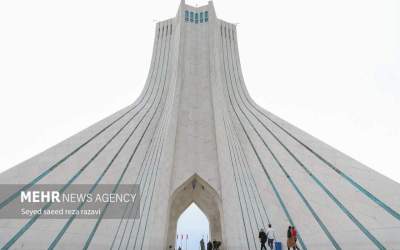Generally, value chain in petrochemical sector covers a broad spectrum of materials, about 3.000 various materials, of which around 1.200 items are used at home. Out of these 1200 items, more than 400 items could be exported in case of having access to technology.
The worth of value chain in petrochemical sector worldwide is estimated at 1.850 billion dollars annually. The value of related technology is estimated at 400 billion dollars annually in the form of selling licenses, machinery, equipment and their related services.
Nameplate production capacity of petrochemicals in Iran stood at 14.2 million tons annually at the beginning of the third economic development plan. This volume has been planned to reach 100 million tons at the end of the current Iranian year, 1394, as the final year of the fifth five-year economic development plan.
Iranian minister of petroleum Bijan Zanganeh, in an interview with Financial Times, announced development of petrochemical industry and boosting production of petrochemicals will be his top priorities during his tenure as minister of petroleum. He said: "When I started my job for the first time as minister of petroleum in 1997 �the total value of Iran�s petrochemical products stood at one billion dollars but since then new petrochemical projects have been launched so that the total value of petrochemicals has climbed to 21 billion dollars and is set to reach 40 billion dollars annually."
He continued as much as 70 billion dollars is needed as investment in order to realize the target.
Furthermore, petrochemical sector needs related licenses, equipment, credit, management and foreign investment in order to achieve its development targets in petrochemical sector, he said.
Elsewhere he said: "Iran�s petrochemical sector�s doors are open to foreign investment and foreign investors are faced with no limitations in view of direct investment in petrochemical and refining projects of the country."
A brief look at the ongoing and future petrochemical projects shows that NPC has focused its efforts on production of primary and basic products as ethylene, propylene, methanol, urea, ammoniac, aromatics, poly-olefins, different kinds of polymers and intermediary products in order to achieve its target of raising nameplate production capacity to 100 million tons at the end of fifth five year economic development plan.
[caption id="" align="alignnone" width="465"]
 Diagram No.1 The ratio of dependency of future petrochemical projects of the country to foreign technology[/caption]
Diagram No.1 The ratio of dependency of future petrochemical projects of the country to foreign technology[/caption]With regard to current and future petrochemical products' capacity, it could be said that Germany has the largest share with 26 percent, and U.K and the Netherland with 10 and France with 9 percent are in the second and third place.
[caption id="" align="alignnone" width="480"]
 Diagram No.2 The ratio of dependency of current and future petrochemical projects to foreign technology[/caption]
Diagram No.2 The ratio of dependency of current and future petrochemical projects to foreign technology[/caption]Past surveys show that petrochemical sector is entirely dependent on foreign countries in view of technology and four European counties including Germany, U.K, France and the Netherlands provide half of these needs, a trend that is expected to continue in future projects of Iran�s petrochemical sector.
High level of petrochemical sector�s dependency on foreign technology implies that the issue has been ignored since the onset of building petrochemical plants in the country, but now the petrochemical sector should take necessary initiatives to have a share in technological achievements.
Furthermore, in downstream activities of petrochemical sector, Iran is mainly dependent on importation of machineries from China, Taiwan, Germany and Italy. These countries are the main providers of petrochemical sector�s needs to technology and technical know-how.
Under the development plans which are scheduled to come into force in petrochemical sector until 2025 Outlook, NPC has decided to take some steps in indigenization, commercialization and development of some know-how as follow:
Methanol, urea, ammonia, olefin, DME, PDH, MEG, GTL, the polyethylene and polypropylene, polystyrene, aromatics, TPO and smart polymers, rotating machines and equipment, homogeneous and heterogeneous catalysts, polymer additives', pressure vessels, reactors, convertors, electro polishing reactors, different pipes, and many other tehcnologies and technical-know-hows that are part of value chain in petrochemical sector and need examination and planning to acquire them.
It is noteworthy that projection of as much as 70 billion dollars investment in petrochemical sector requires a capable financial and banking system in order to be able to provide and manage these resources which in turn needs removing legal barriers, reforming contracts and lifting sanctions.
We should take into account that the majority of technologies in petrochemical sector have either European or American origin. Ignoring these realities could result in likely incorrect decisions with heavy losses in the not too distant future.
By SHANA










